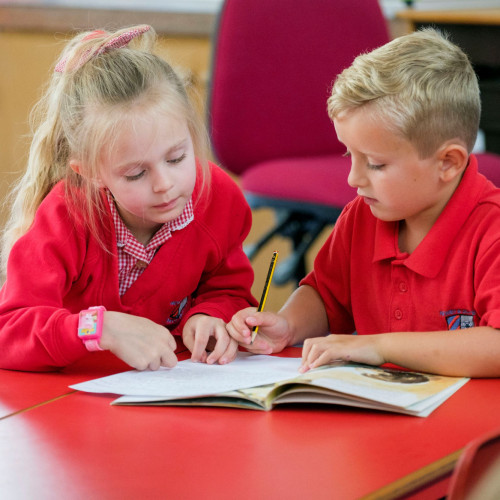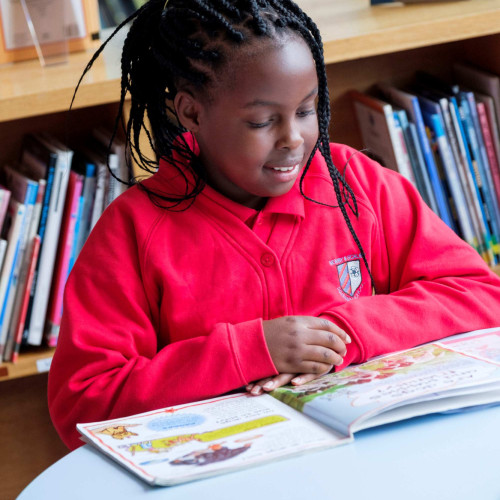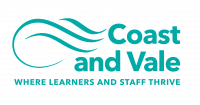Reading Enhanced Curriculum
Our reading-enhanced curriculum excites pupils to ask questions and learn new knowledge and skills. Our curriculum builds pupils’ substantive and disciplinary knowledge progressively over time, from the moment they start school in the Early Years. It prepares them well for the Key Stage Three curriculum.
The reading-enhanced curriculum has reading for purpose built into all learning. Units of work have a high-quality, age-appropriate driving text assigned that is used as the catalyst to impart curriculum knowledge and promote questioning. These texts are carefully selected to engage, inspire and deepen understanding. Alongside this, supplementary texts and bespoke knowledge organisers enable pupils to enrich their knowledge, subject-specific vocabulary and curriculum skills. Every curriculum session includes reading for purpose, from either the driving book or a supplementary text. Pupils then use this as a stimulus to discuss new knowledge, deepen their enquiry skills and form links in their learning.
The long-term plan is devised so that there are clear subject links within a unit, enabling pupils to make connections in their learning. This is also the case with the subject strands, where skills correlate with other subjects. For example, the skills within similarities and differences in history work parallel with making comparisons in geography.
Pupils learn subject content in the reading-enhanced curriculum prior to accessing the reading strategy texts. For example, in the Year 5 Democracy unit, pupils learn about the Gunpowder Plot. This prepares them with background knowledge for reading Black Powder in Year 6. This ensures that pupils have a further opportunity to demonstrate knowledge in a different context, build schema and reinforce retention of knowledge.
Pupils master knowledge progressively through each year, phase and key stage. The needs of all pupils have been carefully considered when setting this ambition. This ambition remains high but may be adapted by support and resources, for example, for those pupils with SEND.
The most important knowledge we expect pupils to remember is identified as take-aways in each subject. Reinforcing our strong belief in fostering enquiry, all units have an overarching Big Question as its title and each session has a threaded Big Question: all of which are used to assess pupil progress.
Influential people are also paramount to the curriculum and are used in all subjects. These are selected to span different eras and link directly to the unit of work pupils are learning. By incorporating a diverse range of people (e.g., historians, scientists, entrepreneurs), new learning is put into a real-world context, developments within a subject historically are seen and pupils are given an insight into how their learning impacts on the world around them and inspires them to pursue future careers.
Throughout the REC curriculum, we take every opportunity possible to promote pupils’ spiritual, moral, social and cultural development.
Phonics
We follow a DfE validated systematic synthetic phonics (SSP) programme called Essential Letters and Sounds (ELS).

Getting all children to read well, quickly.
What is phonics?
Synthetic phonics is a way of teaching children to read. It teaches children how sounds are represented by written letters. Children are taught to read words by blending these sounds together to make words. For example, they will be taught that the letters ‘m-a-t’ blend together to make ‘mat’.
A synthetic phonics programme, such as ELS, provides a structure for teaching these sounds in a certain order to build up children’s learning gradually. It is used daily during Reception and Year 1 to teach all the sounds in the English language.
How is ELS taught in school?
With ELS, there is a daily phonics lesson where children are taught a new sound, or where they review sounds learned earlier in the week. This is shown to the class on the whiteboard.
Children learn the letters that represent the sounds. They are then asked to read words and sentences with the new sounds in. Children will also practise writing the letters that represent the sounds.
Additional support
ELS is delivered using a whole-class approach. This ensures that all children benefit from the full curriculum. Children who encounter difficulties are supported by the teacher throughout the lesson, and where further support is required, ELS has three interventions to ensure that any learning gaps are quickly filled. These are intended to be short and concise. This helps ensure that children do not spend excessive time outside of the classroom or in group intervention sessions where they are removed from the rest of the curriculum.
Assessment
It is important that children’s progress is assessed thoroughly, so that any gaps can quickly be identified.
Assessment of the children’s reading skills is key to ensuring that all children make rapid progress through the programme, and that they keep up rather than catch up.
We assess children’s phonic knowledge in the fifth week of each half term, to allow all members of staff to target and close any gaps that may be present in either sound knowledge or reading skills. By
undertaking assessment in the fifth week we are able to action a direct intervention before any upcoming school holidays.
Decodable readers
It is vital that whilst children are learning to read, they read books that match their phonic knowledge. The Oxford University Press decodable readers support Essential Letters and Sounds and have been carefully matched to every aspect of the programme. We use these books in school and as take-home readers.
How can I help at home?
Practising the sounds
You can help your child practise the sounds they have been learning at school. Download the charts from the Oxford Owl for Home website so you can see the list of sounds in the order they’ll be taught: Essential Letters and Sounds - Oxford Owl You can show these to your child along with the picture to help them remember.
Reading decodable books
Your child will bring home reading books with words that use the sounds they have been learning in school. You may hear these reading books called ‘decodable books’. Use the prompts inside the front and back covers to enjoy the book together and help your child practise reading.
By reading and re-reading texts both in school and at home we offer children the opportunity to develop a cohesive orthographic map of the words within our language. This in turn helps to build their reading fluency. The more you can read at home with your child, the better. We ask that children read the decodable reader they bring home at least three times during the week.
You can find more information about ELS, including the order the sounds are taught in, on the Oxford Owl website:










